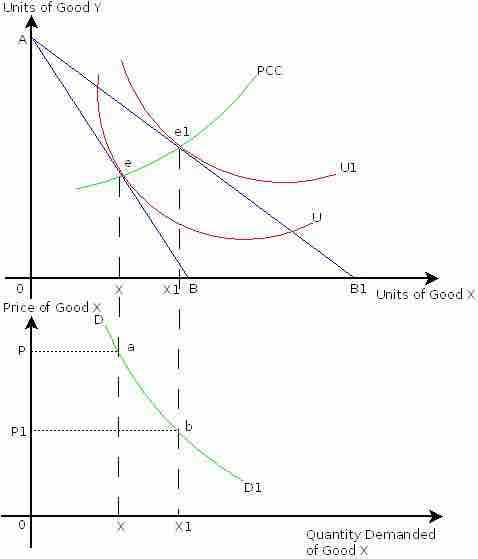The law of demand in economics pertains to the derivation and recognition of a consumer's relative desire for a product or service coupled with a willingness and ability to pay for or purchase that good. Consumer purchasing behavior is a complicated process weighing varying products/services against a constantly evolving economic backdrop. The derivation of demand is a useful tool in this pursuit, often combined with a supply curve in order to determine equilibrium prices and understand the relationship between consumer needs and what is readily available in the market.
Deriving Demand Curves
Despite a wide array of prospective goods and services in a constantly altering economic environment, the law of demand pursues the derivation of a demand curve for a given product that benchmarks the relative prices and quantities desired by consumers in a given marketplace. The inherent relationship between the price of a good and the relative amount of that good consumers will demand is the fulcrum of recognizing demand curves in the broader context of consumer choice and purchasing behavior.
Generally speaking, normal goods will demonstrate a higher demand as a result of lower prices and vice versa. The derivation of demand curves for normal goods is therefore relatively predictable in respect to the direction of the slope on a graph (see ). The downward slope represented in this figure underline the critical principle that a given price point will reflect a given quantity demanded by a given marketplace, allowing suppliers and economists to measure the value of a product/service based on a price/quantity analysis of consumer purchasing behaviors.

Deriving the Demand Curve (Normal Goods)
This illustration demonstrates the way in which economists can identify a series of prices and quantities for goods demanded, which ultimately represents the overall demand curve for a given product/service.
One important consideration in demand curve derivation is the differentiation between demand curve shifts and movement along the curve itself. Movement along the curve itself is the identification of what quantity will be purchased at different price points. This means that the factors that underlie consumer desire for the product remains constant and consistent, but the quantity or price alters to a new point along the established curve. Alternatively, sometimes external factors can shift the actual demand for a given good, pushing the demand curve outwards to the right and up or inwards down and left. This represents a substantial change in the actual demand for that product, as opposed to a quantity or price shift at a fixed demand level.
Exceptions: Giffen Goods and Neutral Goods
With the concept of general demand curves in mind, it is important to recognize that some goods do not conform to the traditional assumption that higher prices will always demonstrate lower demand. Giffen goods and neutral goods break this rule, with the former demonstrating an increase in demand as a result of a price rise (see ) and the latter demonstrating indifference to price in regards to the quantity demanded (illustrated as a completely vertical demand curve):

Demand Curve for Giffen Goods
Giffen goods are essentially goods that demonstrate an increase in demand as a result of an increase in price, generally considered counter-intuitive in traditional economic models. This graph illustrates the derivation of a demand curve for these goods.
- Giffen Goods - Giffen goods are a situation where the income effect supersedes the substitution effect, creating an increase in demand despite a rise in price. Goods such as high-end luxury items like expensive fashion often demonstrate this type of counter-intuitive trend, where the high price of an item is attractive to the consumer for the sake of displaying wealth.
- Neutral Goods - Neutral goods, unlike Giffen goods, demonstrate complete ambivalence to price. That is to say that consumers will pay any price to get a fixed quantity. These goods are often necessities, defying the standard law of demand due to the fact that they must be purchased regardless of price/situation. A good example of this is water or healthcare, where not getting what is required will have dramatic consequences.